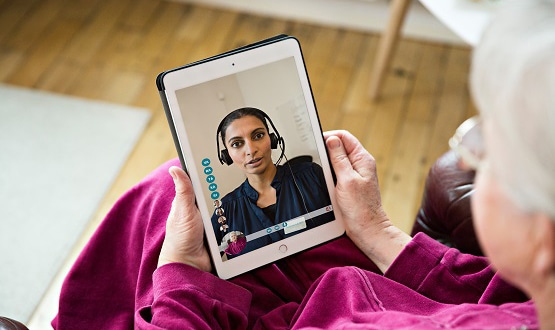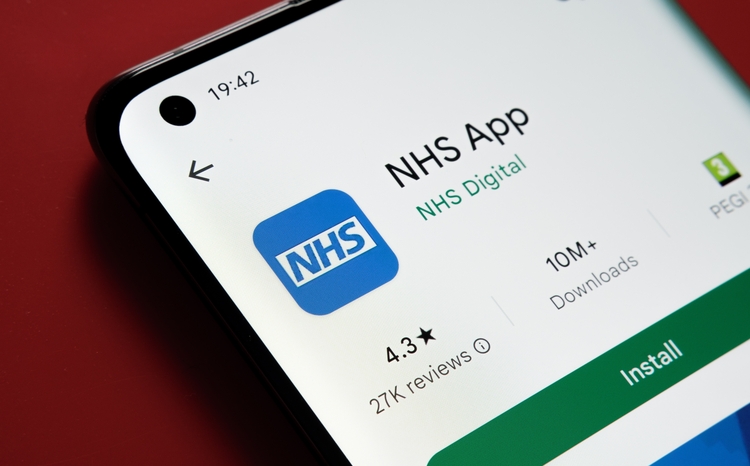Digitising patient pathways could help reduce the number of trips people have to make to different healthcare settings. Jennifer Trueland spoke to Tina Marshall from Visiba Care about what lies ahead for patient pathways technology.
Tina Marshall has personal reasons for wanting the NHS to up its game in terms of transformation of patient pathways – she really, really doesn’t enjoy enforced multiple trips to different healthcare settings to sort out something that should be achieved through one visit, or maybe two.
“I needed surgery, but I had young children,” she explains. “So, every time I had to go for an appointment, I had to take my son with me, pack his snacks, pack his games – it’s like a kids’ day out – just to sit in the waiting room, over and over again; it’s such a rigmarole, and then the same thing happened when I was finally referred to secondary care – repeated visits until I finally got the operation.
“It would have been so much more efficient if we could have used digital tools to send my patient history either to the GP or directly through to the specialist. I could have done my pre-operative assessment online, for example. It would have saved the health service time and money, and it would have saved me going to all these appointments.”
As UK country manager for Visiba Care, Marshall’s job is all about transforming patient pathways through digital technology.
A “trusted partner” of NHS England in the pandemic, Visiba Care is a digital solution that enables healthcare providers to run virtual clinics through their own branded patient portals. Not surprisingly, the technology came into its own last year as providers recognised they needed an alternative to a wholly face-to-face service.
But as the NHS moves into the post-Covid recovery phase, Marshall believes the benefits of virtual will continue to make themselves felt.
“Digital tech helps reduce the length of consultations by up to 60% – in a virtual consultation, the calls are much more focused. And when you allow patients to send in information prior to the call, the clinician can review it beforehand, so their thought processes – their detective work, if you like – has already begun,” she said.
“If you can save time, you can improve the throughput of patients, which is incredibly important as the NHS faces such a huge backlog of people waiting to be seen.
“You can also reduce the DNA [did not attend] rate, which is a real drive for efficiency, and also ensure high patient satisfaction.”
One of the barriers to greater adoption is that digital transformation is often seen as something completely separate to healthcare when it is actually an intrinsic tool for clinicians to use, and one that actually is focused on patients.
“Patient-centric or patient-centred are words that have been floating around in healthcare for many years,” Marshall says.
“But are we actually patient-centric? Are we actually doing what patients want? I know that as a patient, I don’t want to have to sit in a waiting room for a really long time to see a clinician. But at the same time, are we allowing our clinicians to take a step back and review how they can improve the patient pathway?
“You’re never going to create the efficiencies if you simply swap a physical appointment with video – you have to transform the patient pathway. So, there are some instances where you’ll interact with the patient digitally – and that could be by messaging, or by video.
“Other times, you’ll meet with them physically. It’s a mixture of both that will create the efficiencies, and make sure that the patients are cared for, and allow the healthcare professional to have ownership of what’s happening with the patients if that’s what they want to have.”
It’s not going to be suitable in every single case, she adds, but it’s a tool that can help for particular cohorts of patients, if that’s the mode of communication the patient would like to have.
Making sure that the tech is well-used, rather than left to moulder on a shelf is critical to achieving efficiencies, which means that there has to be clinician buy-in.
“You must be able to provide a flexibility for healthcare providers, so I think it’s important to have a clinically-led, patient-centric solution for digital technology,” Marshall says.
She also adds that what the pandemic has shown is that transformation can happen quickly, and effectively where the will is there.
“In Sweden, when the first lockdown hit, we launched 512 clinics in four weeks,” Marshall says.
“At the same time in England we were still talking about frameworks and pulling things together. We know there are solutions out there, but if you look at the data from NHS Digital for primary care, online and digital are a very small percentage of the mode of communication.
“You hear a lot of chatter about why that might be the case, but one of the main reasons, I think, is that when you’re in an emergency situation, you revert back to what’s comfortable.
“I appreciate that, but now is the time that we have to give our healthcare professionals a couple of hours to sit back and look at patient pathways. We do this with our customers – we go through the functionality of the solution, and we talk about their patient pathways, and then we step back, if you like, and facilitate the conversation instead of telling them exactly what to do. And once you’ve facilitated the conversation they have their own lightbulb moments about how it could work for their patients.”
Looking towards the next few years, Marshall believes the pandemic has given the world lessons for the future.
“Part of us – it’s human nature – would like to revert back to normal because the last year has been horrendous,” she says.
“But we’re going to see such a big wave of patients that we need to get through, that actually, virtual consultations is one of the only ways to help make an indent in that. And it has to be a help: it has to be a mix of digital and physical and it has to be aligned with patient pathways.”
Marshall, is also hopeful that the transformation accelerated by the pandemic will continue – giving people like her more control over their care and a better experience all round.
“A lot of patients do want to manage their own care – and if I didn’t have to take my three-year-old son to sit with me at the doctor’s for a couple of hours, I’d be really happy to do that,” she concludes.
Contact Visiba Care:
Website: www.visibacare.com/en-gb/
Twitter: @UkVisiba
Linkedin: Visiba Care







